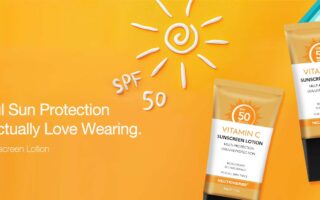Salicylic acid is the most widely used solution to visibly reduce the signs of acne. Therefore, try to use products that contain this substance. However, there are several alpha hydroxy acids, such as glycolic acid and benzoyl peroxide, that can also be effective.
What are alpha-hydroxy acids?
Alpha hydroxy acids (AHAs) are water-soluble acids from sugary fruits, such as the acid:
- Citrus: from citrus fruits, such as lemon or orange.
- Lactic: it comes from milk and different fermentations.
- Glycolic: found in sugar cane.
- Malic: it is extracted from apples.
- Mandelic: derived from bitter almonds.
- Tartaric: obtained from grapes.
These molecules are usually present in peelings and exfoliants, as they help to peel the epidermis. In this way, new and more evenly pigmented skin cells can be generated and taken in their place.
Which acid is best for stains?
However, salicylic acid helps to unify skin tone and lighten spots due to its depigmenting properties. But, glycolic acid can be a good alternative.
In general, most alpha hydroxy acids work well against stains, from citric, lactic, tartaric or malic acid. Other topical depigmenting active ingredients are kojic, azelaic, tranexamic or ascorbic acids; keratolytic, retinol, niacinamide or arbutin.
Can niacinamide and salicylic acid be mixed?
No, it is not recommended to mix them, since the positive effects of both compounds would cancel each other out. When niacinamide combines with acidic substances, such as BHAs and AHAs, a watery solution forms and the pH drops.
As a consequence, niacinamide hydrolyzes and becomes Niacin, which can dry out the skin, causing irritation, sensitivity and flaking.
Which is better: salicylic acid or glycolic acid?
As we have just seen, these two substances can be complementary and their use is sometimes confused. Therefore, we see it convenient to explain which is better in each case.
Glycolic acid is more effective when you have dry, dull skin, signs of acne or age spots, due to its ability to exfoliate the epidermis.
However, salicylic acid is best if you have oily or combination skin that is prone to blackheads, pimples, or whiteheads, as it works by penetrating deep into enlarged pores.
In any case, it is not indicated to use glycolic acid daily and leave it overnight, as it makes the skin more prone to hyperpigmentation.
What are betamethasone and salicylic acid used for?
Betamethasone dipropionate is a corticosteroid, which is applied to the skin to reduce redness, inflammation and itching caused by certain skin problems.
Salicylic acid then decreases the thickness of the scaly layer on the skin surface caused by your disease (keratolytic effect), allowing betamethasone to reach the underside of the affected skin.
Both ingredients are key in Diprosalic.
Diprosalic is a medical ointment manufactured by Merck for the treatment of inflammatory manifestations of corticosteroid-responsive hyperkeratotic and dry dermatoses, such as psoriasis, lichen, seborrheic dermatitis of the scalp.
What are sulphur and salicylic acid used on the skin?
As both substances have antimicrobial and keratolytic properties, they are combined in topical creams to treat skin disorders (such as acne) and scalp disorders (such as seborrheic dermatitis and dandruff).
Specifically, sulphur soothes eczema and reduces itchiness by soothing and moisturising rough, dry skin.
